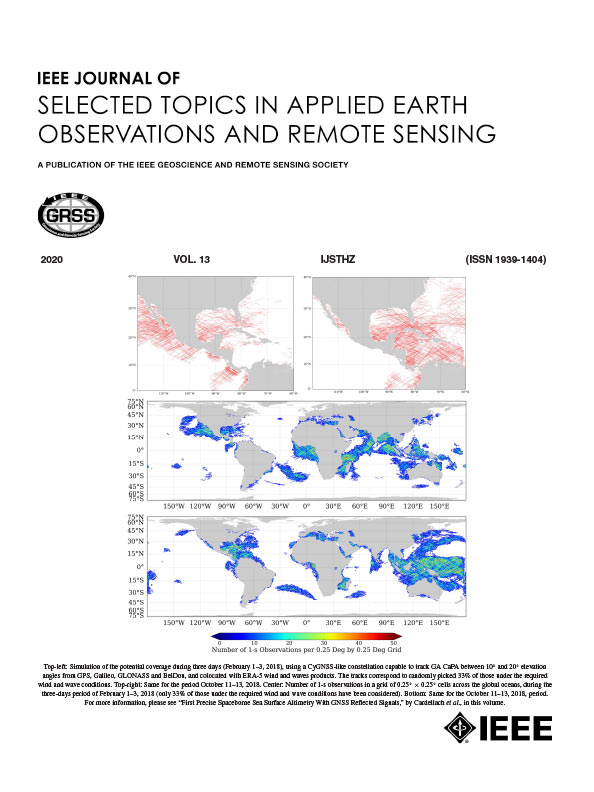Rainfall Rate Measurement for Advanced Meteorological Imager of the GEO-KOMPSAT-2A Satellite
IF 5.3
2区 地球科学
Q1 ENGINEERING, ELECTRICAL & ELECTRONIC
IEEE Journal of Selected Topics in Applied Earth Observations and Remote Sensing
Pub Date : 2025-06-18
DOI:10.1109/JSTARS.2025.3580888
引用次数: 0
Abstract
An operational rainfall rate (RR) algorithm for the advanced meteorological imager (AMI) on the GEO-KOMPSAT-2A (GK2A) satellite has been developed. This algorithm exploitsGEO-KOMPSAT-2A卫星先进气象成像仪降雨率测量
提出了一种适用于GEO-KOMPSAT-2A (GK2A)卫星上先进气象成像仪(AMI)的工作降雨率(RR)算法。该算法利用了GK2A全球降水测量(GPM)双频降水雷达(DPR)和红外(IR)亮度温度(TB)的先验信息。通过纳入包含大范围降水系统的先验信息,增强了RR算法的性能。此外,在检索过程中,通过区分物理上不同的降水系统可以提高检索精度。为了对降水云进行分类,RR算法利用红外通道之间的亮度温度差,考虑到不同水成物和云厚度分布导致的不同辐射特征。因此,RR算法将五种类型的降水云(一种浅云和四种非浅云)分类,并将数据库分为四个纬度带以捕获区域变化。基于使用一年的DPR和AMI数据构建的先验数据库,应用贝叶斯方法将TB值从五个IR通道反演为RR。将RR算法的估计值与DPR和GPM微波成像仪在两个月和12个台风案例中的估计值进行比较。结果表明,RR算法满足运行精度要求,在10 mm/h时偏差为9 mm/h。对朝鲜半岛地面雷达观测的进一步验证证实,反演偏差在精度要求之内。
本文章由计算机程序翻译,如有差异,请以英文原文为准。
求助全文
约1分钟内获得全文
求助全文
来源期刊
CiteScore
9.30
自引率
10.90%
发文量
563
审稿时长
4.7 months
期刊介绍:
The IEEE Journal of Selected Topics in Applied Earth Observations and Remote Sensing addresses the growing field of applications in Earth observations and remote sensing, and also provides a venue for the rapidly expanding special issues that are being sponsored by the IEEE Geosciences and Remote Sensing Society. The journal draws upon the experience of the highly successful “IEEE Transactions on Geoscience and Remote Sensing” and provide a complementary medium for the wide range of topics in applied earth observations. The ‘Applications’ areas encompasses the societal benefit areas of the Global Earth Observations Systems of Systems (GEOSS) program. Through deliberations over two years, ministers from 50 countries agreed to identify nine areas where Earth observation could positively impact the quality of life and health of their respective countries. Some of these are areas not traditionally addressed in the IEEE context. These include biodiversity, health and climate. Yet it is the skill sets of IEEE members, in areas such as observations, communications, computers, signal processing, standards and ocean engineering, that form the technical underpinnings of GEOSS. Thus, the Journal attracts a broad range of interests that serves both present members in new ways and expands the IEEE visibility into new areas.

 求助内容:
求助内容: 应助结果提醒方式:
应助结果提醒方式:


